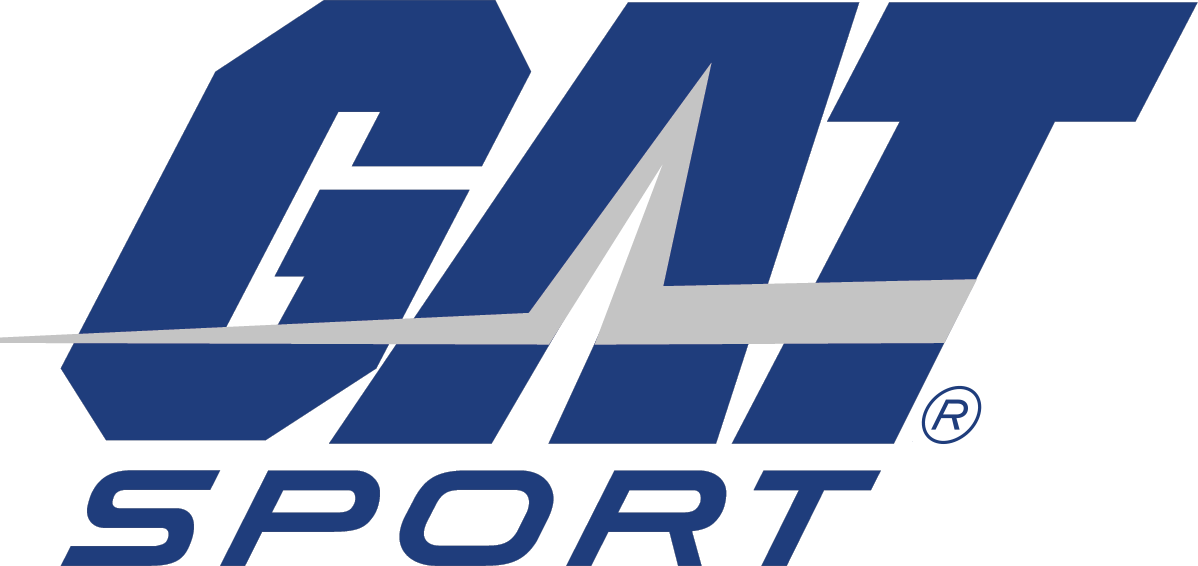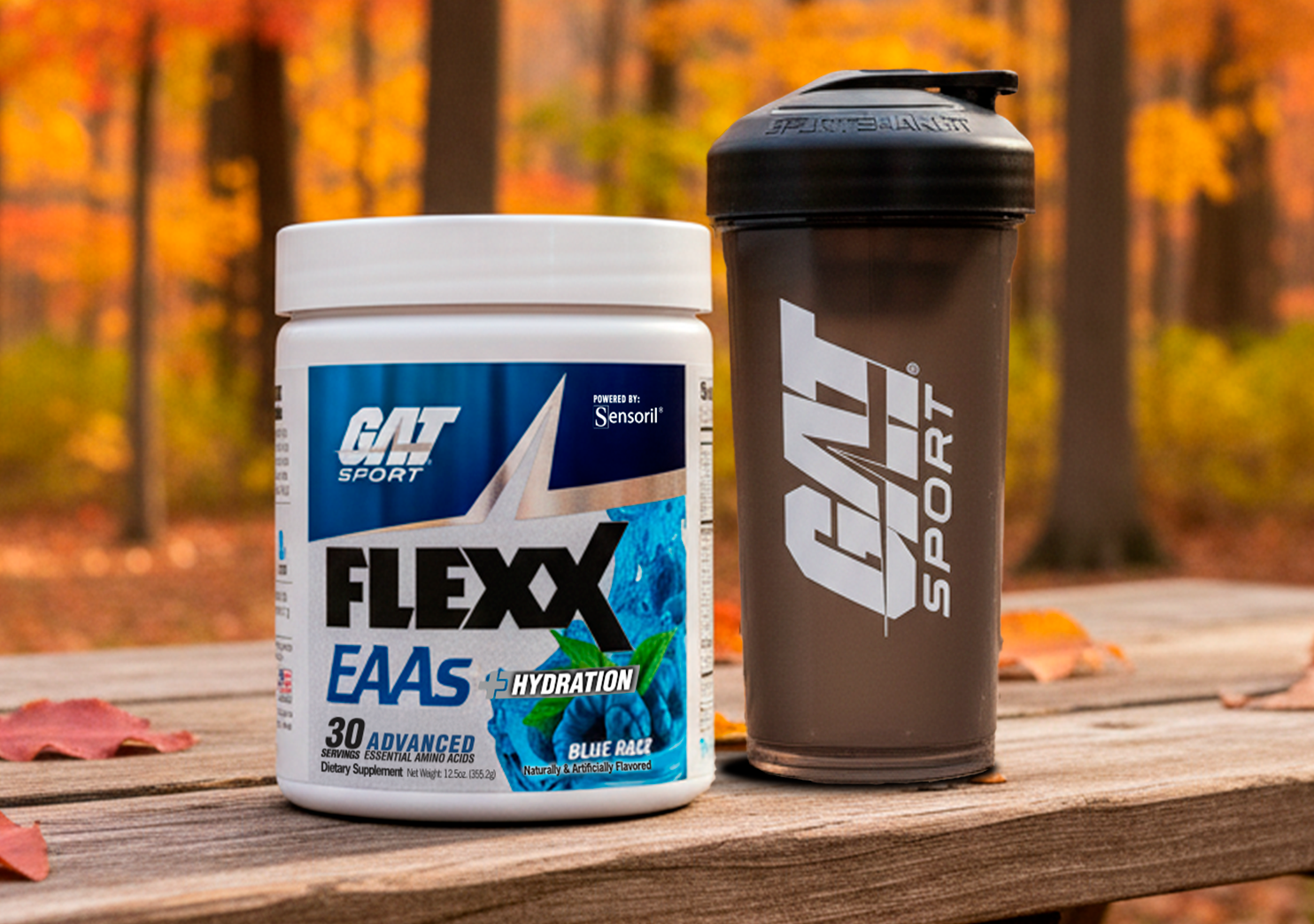While everyone obsesses over pre-workout formulas and pumpkin spice everything, smart athletes are quietly discovering fall's real MVP: complete amino acid support.
As leaves turn and temperatures drop, social media floods with renewed gym commitments and back-to-basics training mantras. Summer's casual beach cardio gives way to serious strength building, and everyone's suddenly an expert on progressive overload. But here's the plot twist worthy of an Andrew Huberman deep dive: while you're meticulously tracking your sleep scores and optimizing your circadian rhythms, your muscles might be staging a quiet rebellion against your gains.
Enter essential amino acids (EAAs), the unsung heroes that could transform your autumn training from frustrating plateaus into consistent progress. Think of EAAs as the behind-the-scenes crew in a blockbuster film; they're not flashy like pre-workout tingles or Instagram-worthy like matching gym sets, but without them, the whole production falls apart.
The Hidden Fall Training Crisis
The problem creeps up like daylight savings time: increased muscle breakdown during intense fall training sessions. As weather cools, athletes instinctively migrate indoors, trading scenic runs for heavy compound lifts and high-volume workouts designed to build winter-proof physiques. This seasonal shift amplifies catabolic stress in ways most people never consider.
Colder environments subtly impair recovery mechanisms. Seasonal vitamin D dips from reduced sun exposure weaken muscle repair pathways. The biohacking crowd obsessively tracking HRV notices mysterious dips despite perfect sleep hygiene. Meanwhile, muscle protein breakdown quietly outpaces synthesis, leading to stalled growth, persistent soreness, and that creeping gym anxiety when results don't match effort.
Research illuminates how fall's environmental shifts compound these challenges. Cooler post-workout temperatures can blunt protein synthesis rates, essentially turning your hard-earned training stimulus into diminished returns. Weekend warriors feel this acutely: after a summer of sporadic beach workouts, fall's intensity spike demands more from muscles that aren't prepared for the workload.
The mental toll mirrors everything Huberman discusses about stress hormones and adaptation. Unchecked muscle breakdown fuels systemic fatigue, erodes motivation, and pushes people toward unsustainable training approaches rather than intelligent programming. Gen Z battles this through TikTok's toxic fitness culture, while Millennials try to power through with sheer willpower between Zoom meetings.

The Science Behind EAAs: More Than Gym Bro Science
Let's decode the research, because EAAs aren't just another supplement trend; they're backed by decades of metabolic science. These nine amino acids (histidine, isoleucine, leucine, lysine, methionine, phenylalanine, threonine, tryptophan, and valine) represent the non-negotiable building blocks your body cannot produce independently.
A landmark study revealed that ingesting just 6 grams of EAAs post-resistance exercise significantly boosts net muscle protein balance, with synthesis rates doubling compared to baseline in healthy adults (1). This isn't marginal improvement; it's the difference between progress and spinning your wheels.
Further research demonstrates EAAs' superiority over other protein sources for stimulating muscle protein synthesis. A balanced EAA mix increases synthesis by up to 108% during recovery, far exceeding the efficiency of whole proteins alone (2). This efficiency matters when you're trying to maximize results without excess calories derailing your physique goals.
Seasonal Demands Amplify EAA Importance
Fall's metabolic challenges create unique protein requirements. Research into seasonal fitness variations reveals that strength and endurance parameters fluctuate throughout the year, with autumn marking a critical transition period where increased training volume meets environmental stressors (3).
A particularly revealing controlled trial found that post-exercise cooling, mimicking fall's natural temperature drop, impairs muscle protein synthesis rates by up to 20% in recreational athletes (4). This means your perfectly executed workout might yield 80% of its potential results simply because you walked to your car in 50-degree weather.
During high-intensity training phases, muscle breakdown accelerates exponentially. Recovery demands spike as training volume increases, sleep quality fluctuates with changing daylight, and stress hormones dance to autumn's unpredictable rhythm. Studies indicate EAA supplementation significantly attenuates muscle damage markers, reducing soreness and improving functional recovery after eccentric exercise (5).
Recent comprehensive analysis pushed our understanding further, showing that while large protein doses sustain elevated muscle protein synthesis for hours, EAAs drive this response most efficiently by directly fueling synthesis pathways without metabolic overhead (6). For time-crunched athletes juggling fall schedules, this efficiency translates to better results with less digestive stress.
Strategic EAA Implementation for Fall Gains
Here's where theory meets practice. Strategic EAA supplementation isn't about randomly chugging aminos; it's about precision timing and intelligent integration into your existing routine.
Start with peri-workout dosing to maximize muscle protein synthesis when it matters most. Research supports consuming EAAs during training or immediately post-workout to flood recovering muscles with essential building blocks. For fall's increased training demands, aim for 10-15 grams per serving, emphasizing leucine content to trigger anabolic signaling. Leucine alone can spike synthesis by 25%, but complete EAA profiles ensure balanced uptake and utilization.
GAT Sport's Flexx EAAs delivers this comprehensive amino coverage with all nine essentials in research-backed ratios, plus electrolytes for hydration during those crisp morning sessions. It's formulated to counter seasonal slowdowns without the digestive burden of heavy protein shakes that leave you sluggish for afternoon meetings.
The Synergistic Stack Strategy
Smart supplementation means strategic combinations. Pre-workout, fuel intense sessions with Nitraflex Advanced; its beta-alanine and citrulline blend sustains energy through high-rep fall training blocks while EAAs handle recovery on the backend.
For enhanced muscle building, add Creatine to the protocol. Creatine amplifies ATP stores, creating synergy with EAA-driven growth. Studies consistently show combined creatine and amino acid support yields superior hypertrophy compared to either supplement alone.
Your fall protocol timeline: 30 minutes pre-workout, activate with Nitraflex Advanced. During training, sip Flexx EAAs to blunt muscle breakdown in real-time. Post-workout, replenish with 5 grams of Creatine for cellular energy restoration. This systematic approach transforms fall's challenges into opportunities for accelerated progress.
For the biohacking enthusiasts, track subjective recovery metrics through your favorite app. Monitor soreness patterns, sleep quality, and training performance to dial in optimal dosing. Gen Z can mix Flexx EAAs into aesthetically pleasing smoothie bowls for the gram. Millennials can stack evening doses with magnesium for enhanced sleep quality, turning recovery into a competitive advantage.
The Bottom Line
EAAs represent fall's most underrated performance tool, addressing heightened muscle breakdown, seasonal metabolic shifts, and elevated recovery demands with scientific precision. While others chase the latest pre-workout formula or debate optimal rep ranges, you'll be quietly building resilient muscle tissue that actually responds to training stimulus.
Don't let cooler months freeze your progress. Embrace strategic EAA supplementation for consistent gains that compound through Winter.
Because when everyone else is complaining about Fall plateaus, you'll be too busy setting PRs to notice.
References
- Borsheim E, Tipton KD, Wolf SE, Wolfe RR. Essential amino acids and muscle protein recovery from resistance exercise. American Journal of Physiology-Endocrinology and Metabolism. 2002;283(4): E648-E657.
- Nosaka K, Sacco P, Mawatari K. Effects of amino acid supplementation on muscle soreness and damage. International Journal of Sport Nutrition and Exercise Metabolism. 2006;16(6):620-635.
- Mujika I, Padilla S. Seasonal variation in fitness parameters in competitive athletes. Sports Medicine. 1995;19(6):434-450.
- Fuchs CJ, Hermans WJ, Holwerda AM, Senden JM, van Kranenburg J, Verdijk LB, van Loon LJC. Postexercise cooling impairs muscle protein synthesis rates in recreational athletes. The Journal of Physiology. 2020;598(4):755-772.
- Hulmi JJ, Lockwood CM, Stout JR. Effect of protein/essential amino acids and resistance training on skeletal muscle hypertrophy: A case for whey protein. Nutrition & Metabolism. 2010; 7:51.
- Trommelen J, Betz MW, van Loon LJC. The anabolic response to protein ingestion during recovery from exercise has no upper limit in magnitude and duration in vivo in humans. Cell Reports Medicine. 2023;4(12):101324.


